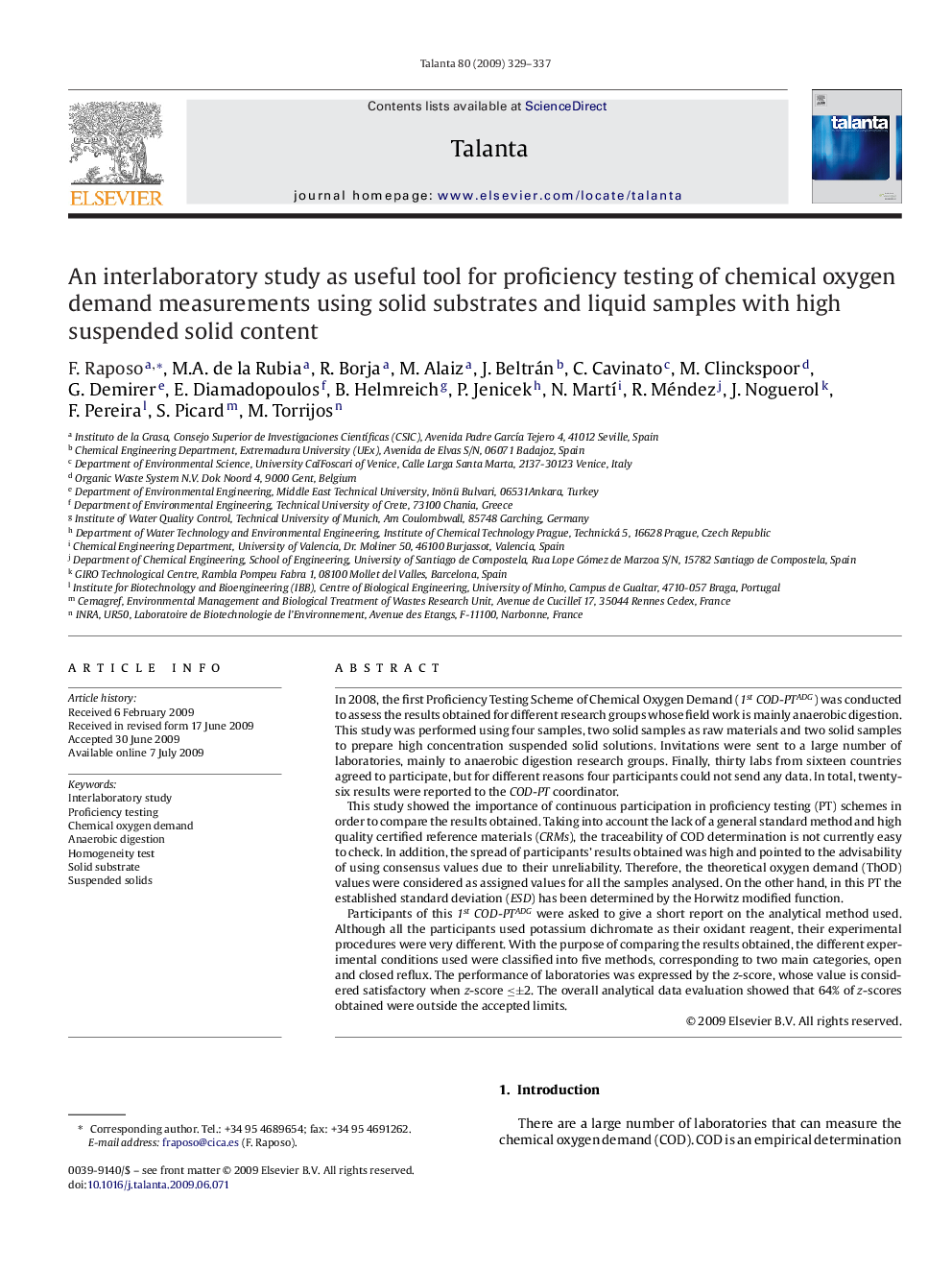| Article ID | Journal | Published Year | Pages | File Type |
|---|---|---|---|---|
| 1243685 | Talanta | 2009 | 9 Pages |
In 2008, the first Proficiency Testing Scheme of Chemical Oxygen Demand (1stCOD-PTADG) was conducted to assess the results obtained for different research groups whose field work is mainly anaerobic digestion. This study was performed using four samples, two solid samples as raw materials and two solid samples to prepare high concentration suspended solid solutions. Invitations were sent to a large number of laboratories, mainly to anaerobic digestion research groups. Finally, thirty labs from sixteen countries agreed to participate, but for different reasons four participants could not send any data. In total, twenty-six results were reported to the COD-PT coordinator.This study showed the importance of continuous participation in proficiency testing (PT) schemes in order to compare the results obtained. Taking into account the lack of a general standard method and high quality certified reference materials (CRMs), the traceability of COD determination is not currently easy to check. In addition, the spread of participants’ results obtained was high and pointed to the advisability of using consensus values due to their unreliability. Therefore, the theoretical oxygen demand (ThOD) values were considered as assigned values for all the samples analysed. On the other hand, in this PT the established standard deviation (ESD) has been determined by the Horwitz modified function.Participants of this 1stCOD-PTADG were asked to give a short report on the analytical method used. Although all the participants used potassium dichromate as their oxidant reagent, their experimental procedures were very different. With the purpose of comparing the results obtained, the different experimental conditions used were classified into five methods, corresponding to two main categories, open and closed reflux. The performance of laboratories was expressed by the z-score, whose value is considered satisfactory when z-score ≤±2. The overall analytical data evaluation showed that 64% of z-scores obtained were outside the accepted limits.
